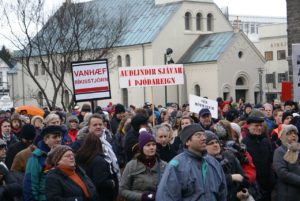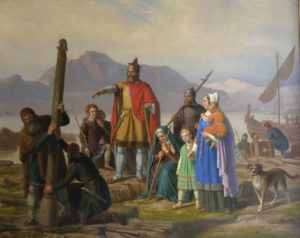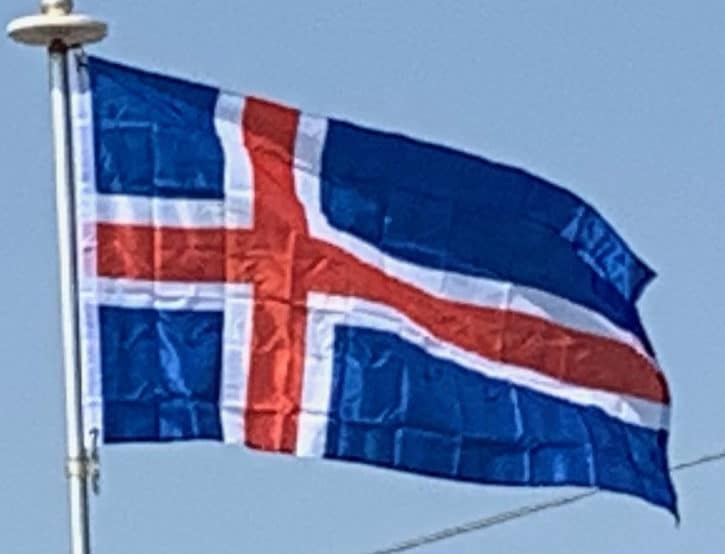Hit hard by the worldwide financial crisis, the nation’s entire banking system systemically failed in October 2008, leading to an economic crisis and the collapse of the country’s three largest banks. The crisis prompted substantial political unrest, the Icesave dispute, and the institution of capital controls (imposed in 2008 and lifted in 2017). By 2014, the Icelandic economy has made a significant recovery, in large part due to a surge in tourism.

Icelandic culture is founded upon the nation’s Scandinavian heritage. Most Icelanders are descendants of Norse and Gaelic settlers. Icelandic, a North Germanic language, is descended from Old West Norse and is closely related to Faroese. The country’s cultural heritage includes traditional Icelandic cuisine, Icelandic literature, and medieval sagas. Iceland has the smallest population of any NATO member and is the only one with no standing army, with a lightly armed coast guard.
History:
874 – 1262 – Settlement and Commonwealth:
According to both Landnámabók and Íslendingabók, monks known as the Papar lived in Iceland before Scandinavian settlers arrived, possibly members of a Hiberno-Scottish mission. Recent archaeological excavations have revealed the ruins of a cabin in Hafnir on the Reykjanes peninsula. Carbon dating indicates that it was abandoned sometime between 770 and 880. In 2016, archaeologists uncovered a longhouse in Stöðvarfjörður that has been dated to as early as 800.
Swedish Viking explorer Garðar Svavarsson was the first to circumnavigate Iceland in 870 and establish that it was an island. He stayed over winter and built a house in Húsavík. Garðar departed the following summer but one of his men, Náttfari, decided to stay behind with two slaves. Náttfari settled in what is now known as Náttfaravík and he and his slaves became the first permanent residents of Iceland.

The Norwegian-Norse chieftain Ingólfr Arnarson built his homestead in present-day Reykjavík in 874. Ingólfr was followed by many other emigrant settlers, largely Scandinavians and their thralls, many of whom were Irish or Scottish. By 930, most arable land on the island had been claimed; the Althing, a legislative and judicial assembly, was initiated to regulate the Icelandic Commonwealth. Lack of arable land also served as an impetus to the settlement of Greenland starting in 986. The period of these early settlements coincided with the Medieval Warm Period, when temperatures were similar to those of the early 20th century. At this time, about 25% of Iceland was covered with forest, compared to 1% in the present day. Christianity was adopted by consensus around 999–1000, although Norse paganism persisted among segments of the population for some years afterwards.
The Middle Ages:
The Icelandic Commonwealth lasted until the 13th century, when the political system devised by the original settlers proved unable to cope with the increasing power of Icelandic chieftains. The internal struggles and civil strife of the Age of the Sturlungs led to the signing of the Old Covenant in 1262, which ended the Commonwealth and brought Iceland under the Norwegian crown. Possession of Iceland passed from the Kingdom of Norway (872–1397) to the Kalmar Union in 1415, when the kingdoms of Norway, Denmark and Sweden were united. After the break-up of the union in 1523, it remained a Norwegian dependency, as a part of Denmark–Norway.
